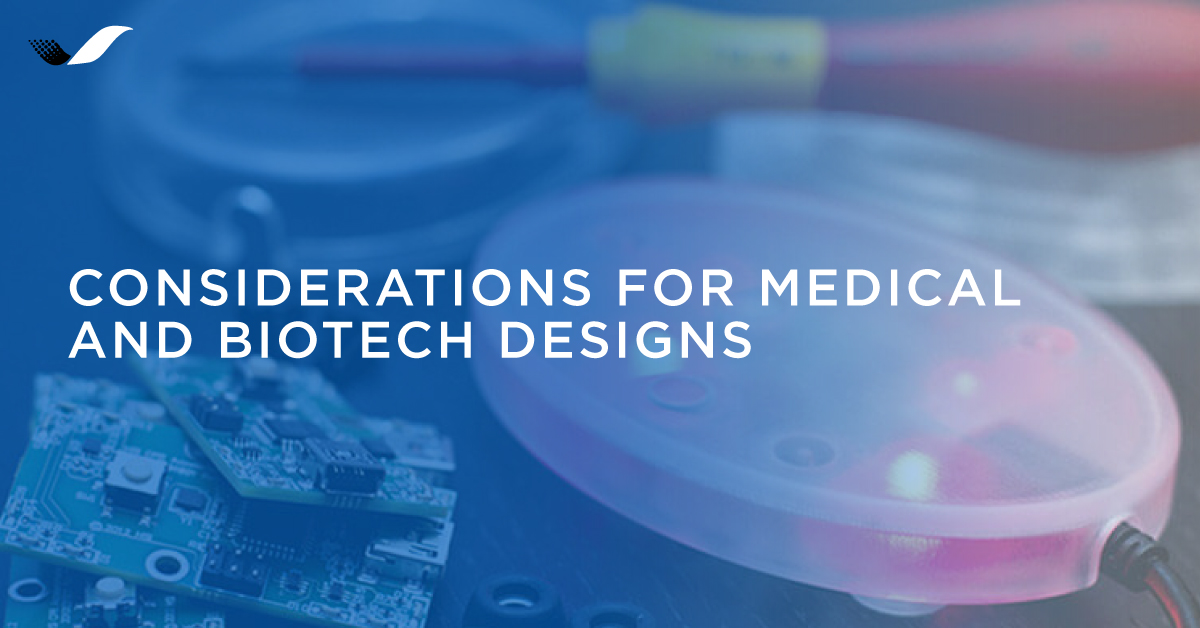Medical and biotech device development is a special class of product development because of the regulatory environment. Those new to the field are often surprised about what devices are considered medical devices and the amount of effort that goes into developing one. Although the formality and rigor of medical device development does increase the cost and time to market, the process seeks to ensure high quality, safe products are delivered by enforcing well-defined design practices.
What is a medical device?
The FDA considers a device medical if its intended use is in the diagnosis, cure, mitigation, treatment, or prevention of disease in humans or other animals. Additionally, a device whose intent is to affect the structure or any function of the body of a human or other animal, not through chemical means (such as drugs), is medical. This definition encompasses a wide variety of devices from Band-aids to systems that deliver powerful opioids to pacemakers.
The regulations around medical device development don’t prescribe specific design methodologies but rather ensure that a process is defined and documented with evidence to show that the process was followed. Many design methodologies can be used, including waterfall, iterative, and Agile development. Often, medical device development follows a process with well-defined phases with gates in-between, sometimes called toll-gates. The stops between phases are used to review the status of the project and make sure that all the necessary milestones and documentation are completed. One example of a phased approach is:
- Planning and requirements
- Risk reduction and architecture
- Design and implementation
- Verification and validation
Planning and medical device design
The planning phase is often abbreviated or skipped altogether in consumer development. In medical and biotech fields, however, the planning phase is an important part of the process. The purpose of this phase is to plan and prepare a foundation for the project. Additionally, during the planning period, the team will work to understand and document the system level requirements.
One of the primary differences in designing medical and biotech devices compared to consumer electronics is the level of effort afforded to dealing with risk. In a consumer device, developers tend to focus on technical risk and project risk. Technical risk is the risk of the planned technology, architecture, or implementation not being sufficient to meet the requirements. Project risk relates to schedules, staffing, cost, or delivery. The third area of concern is product safety risk. For consumer devices, the majority of project safety risk is addressed via conformance to standards such as UL and CE.
In medical or biotech devices, the primary focus is product safety. In medical device development, strict process is used to enforce good design practices that reduce the risk of harm. Risk can be described as the combination of the probability of harm and the severity of that harm.
Risk analysis and design
During the second phase of development, the team will do a formal risk analysis of the system. A risk analysis is the systematic use of available information to identify hazards and estimate the risk. A hazard is a potential source of harm such as heat, electricity, or sharp edges. Once risks have been identified, requirements to mitigate those risks are added to the system requirements outlined in the first phase of development. The second phase is also the time to come up with the architecture of the system, the architecture of the system’s components, and the interfaces between them.
Once the architecture phase is complete and documents have been formally reviewed, the detailed design begins. This is where we do the fun part of engineering. Mechanical engineers will begin the design of physical product components that a user will interact with, as well as the mechanisms within, and create system prototypes for user and performance evaluation. Electrical engineers will complete electrical system schematics and manufacture the circuit boards. Software engineers will design the software system, begin coding, and design and execute unit and integration tests. Quality engineers will create their test protocols in preparation for the verification phase. The designs, code, and test plans must be formally reviewed, and documents from earlier phases are revised as necessary.
Verification and validation
The final stage of development is the verification and validation phase. Final system integration work may happen during this phase, but by this time the product is largely complete. This phase is where the quality engineers do the bulk of the work. Formal testing of the system is performed and documented. Traceability matrices, which trace the tests to the formal requirements, are updated. Once testing is complete, the design is considered done and it can be transferred to manufacturing.
The design practices that are required for medical device development are often employed for non-medical device development as well. However, the level of formality in the documentation is much more rigorous for medical devices. This adds overhead to medical device development but adds the traceability and assurance that proper design process has been followed, leading to safer medical devices for all of us.
For more on topics related to product design in biotech, medicine, and other fields, follow Simplexity’s product development blog.

